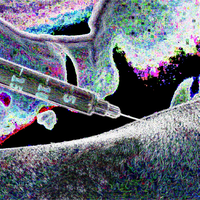| Piperazine | |
|---|---|
| Salts [] | |
|---|---|
| Piperazine sulfate | |
| Piperazine hydrobromide | |
| Piperazine phosphate | |
| Piperazine tartrate | |
| Piperazine adipate | |
| Dipiperazine tricitrate | |
| Piperazine camsilate | |
| Molecular structure via molpic based on CDK |
| Physical properties [] | |
|---|---|
| Molecular mass | 86.14 g/mol [1] |
| Density | 1.1 at 68 °F (NTP, 1992) - Denser than water; will sink g/cm3 [1] |
| Appearance | Plates or leaflets from ethanol [1] |
| Odor | Typical amine odor [1] |
| Taste | Salty taste [1] |
| Melting point | 223 ° [1] |
| Boiling point | 295 ° [1] |
| Decomposition | When heated to decomposition it emits highly toxic fumes of /nitrogen oxide/. [1] |
| Solubility | Very soluble (NTP, 1992) [1] |
| Predicted LogP | -1.5 [1] |
| Structural Identifiers [] | |
|---|---|
| Molecular formula | C4H10N2 [1] |
| IUPAC name | piperazine [1] |
| SMILES | C1CNCCN1 [1] |
| InChI | InChI=1S/C4H10N2/c1-2-6-4-3-5-1/h5-6H,1-4H2 [1] |
| InChIKey | GLUUGHFHXGJENI-UHFFFAOYSA-N [1] |
| Toxicity [] | |
|---|---|
| TDLo | Human - child: - oral: 75 mg/kg |
| LD50 | Rat: - oral: 1900 mg/kg - subcutaneous: 3700 mg/kg - intravenous: 1340 mg/kg - intramuscular: >2500 mg/kg Mouse: - oral: 600 mg/kg - intraperitoneal: 1900 mg/kg - intravenous: 1180 mg/kg Rabbit: - skin: 4 mL/kg |
| LC50 | Mouse: - inhalation: 5400 mg/m3/2H |
Piperazine
Piperazine (also known as Diethylenediamine, 1,4-Diazacyclohexane, Piperazin, Hexahydropyrazine, Piperazidine, Antiren, 1,4-Piperazine, Diethyleneimine, Pipersol or Eraverm) is a
Chemistry
Salts []
Piperazine is typically found in the form of its sulfate, hydrobromide, phosphate, tartrate, adipate, tricitrate and camsilate salts.
Stereochemistry []
Piperazine is a achiral mixture
See also []
External links []
References []
National Center for Biotechnology Information. PubChem Compound Summary for CID 4837, Piperazine. Accessed August 19, 2025. https://pubchem.ncbi.nlm.nih.gov/compound/4837
U.S. Food and Drug Administration; National Center for Advancing Translational Sciences. Piperazine. UNII: 1RTM4PAL0V. Global Substance Registration System. Accessed August 19, 2025. https://gsrs.ncats.nih.gov/ginas/app/beta/substances/1RTM4PAL0V
 Anodyne
Anodyne